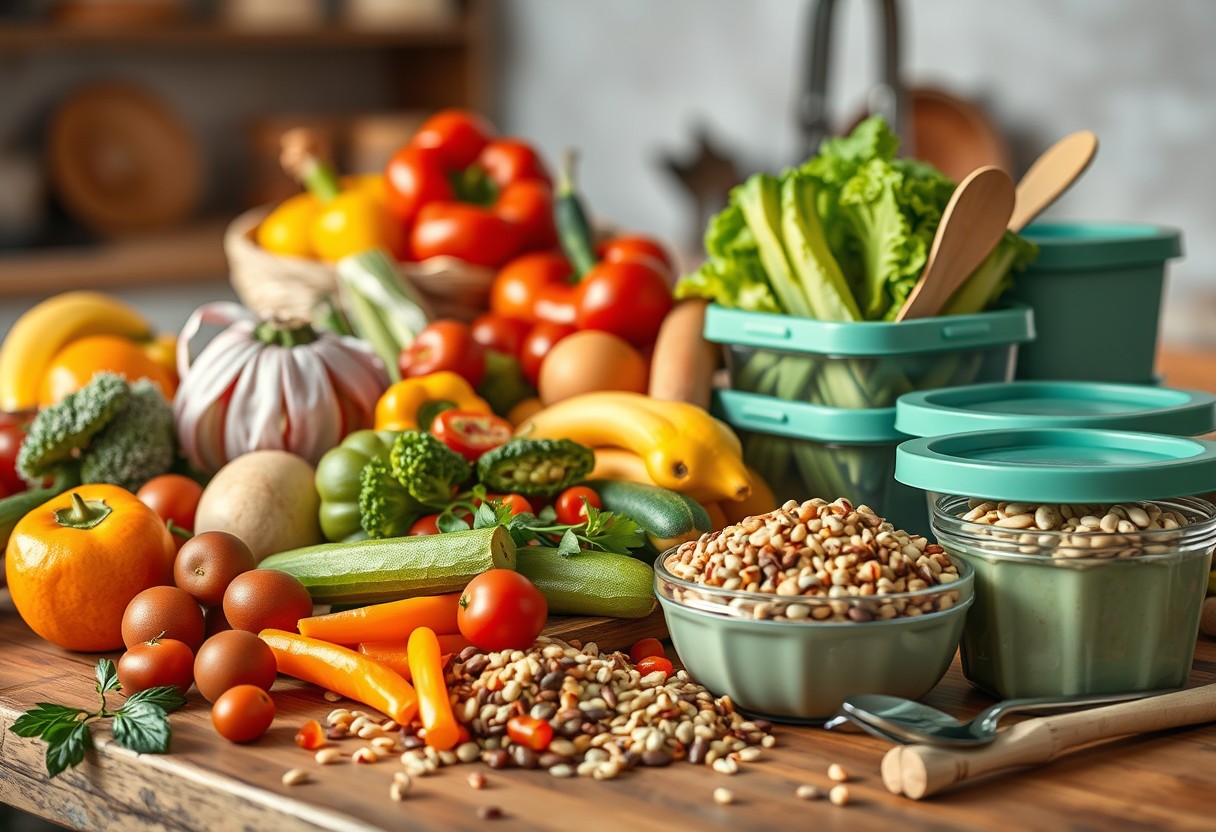As you explore the world of cooking, you’re likely looking for ways to make your culinary adventures more sustainable. You can start by discovering eco-friendly food preservation techniques that not only reduce waste but also add excitement to your meals. For inspiration, check out Zero-Waste Cooking: Trends and Tips for the Eco-Conscious to learn how to create delicious dishes while minimizing your environmental footprint, and get ready to take your cooking to the next level.

Discovering Eco-Friendly Preservation Methods
The journey to eco-friendly food preservation begins with exploring various methods that not only reduce waste but also enhance your culinary experience. You’ll find that these techniques will open doors to new flavors and textures, taking your cooking to the next level.
Exploring Fermentation Techniques
Protecting your food through fermentation is an age-old method that unlocks a world of flavors and nutrients. You can try your hand at fermenting vegetables, fruits, and even legumes to create unique condiments and sides that will elevate your dishes.
Embracing Dehydrating and Smoking
The art of dehydrating and smoking food is a game-changer for your kitchen. You’ll be able to preserve seasonal produce and meats, creating delicious and healthy snacks that are perfect for on-the-go or as a quick addition to your meals.
EcoFriendly approaches to dehydrating and smoking not only help you reduce your carbon footprint but also allow you to get creative with your recipes. You can experiment with different temperatures, seasons, and wood types to infuse your food with distinct flavors, making your culinary adventures even more exciting and satisfying.
1. Eco-friendly techniques enhance flavors and freshness of ingredients.
2. Sustainable methods reduce food waste and save money.
3. Preserving seasonal produce maximizes taste and nutrition benefits.
4. Natural preservation boosts creativity in culinary experimentation.
5. Environmentally friendly practices foster a greater connection with food.
6. Home preservation techniques encourage self-sufficiency and mindfulness.
The Art of Sustainable Food Storage
There’s an art to storing food in a way that’s both sustainable and healthy, and you can learn more about it by visiting The Principles of Healthy, Sustainable Menus | Dining Services. This will help you make informed choices for your culinary adventure.
Creative Ways to Use Glass Containers
Cleverly, you can use glass containers to store your food, keeping it fresh and sustainable. This is a great way to reduce waste and keep your kitchen organized, making your culinary adventure more enjoyable.
Repurposing and Upcycling Old Materials
On the path to sustainable food storage, you’ll find that repurposing old materials is a great way to get creative. You can turn old jars into containers or use them as planters, giving your kitchen a personalized touch.
Food preservation is not just about storing food, it’s also about being mindful of the materials you use. You can take your sustainability efforts to the next level by repurposing and upcycling old materials, reducing waste and creating a unique kitchen space that reflects your personality and values.
Flavors and Textures of Preserved Delights
Keep exploring the world of eco-friendly food preservation, and you’ll discover a plethora of flavors and textures to elevate your culinary adventure. You’ll enjoy a wide range of delicious and sustainable options that will take your cooking to the next level.
Savoring Pickled and Cured Foods
Indulging in Frozen and Canned Treats
Following your curiosity about frozen and canned foods, you’ll find that they offer a convenient way to enjoy your favorite ingredients year-round, and you’ll appreciate the simplicity of incorporating them into your recipes.
Flavors of frozen and canned treats will surprise you with their intensity and variety, and as you experiment with different ingredients and recipes, you’ll find that they become an crucial part of your cooking routine, allowing you to create mouth-watering dishes with ease and creativity, and you’ll enjoy the process of discovering new favorites.

Mastering the Science Behind Preservation
All food preservation techniques rely on understanding the underlying science, and as you research into the world of eco-friendly preservation, you’ll discover the fascinating processes that make your food last longer and taste better.
Beneath the surface of preservation lies the art of balancing salt and sugar to bring out the optimal flavor in your dishes, and as you experiment with different combinations, you’ll find the perfect harmony that elevates your culinary creations.
The Importance of Temperature and pH Control
Around the core of preservation lies the importance of controlling temperature and pH levels, which can be broken down into:
| Factor | Effect |
|---|---|
| Temperature | Affects microbial growth |
| pH Level | Influences enzyme activity |
Flavor and texture are significantly impacted by temperature and pH control, and as you master these elements, you’ll be able to preserve your food while maintaining its natural taste and consistency, so you can enjoy your favorite dishes all year round, and with the right balance of temperature and pH, you can create delicious and healthy meals that your family and friends will love, and to achieve this, consider the following:
| Condition | Effect on Food |
|---|---|
| Low Temperature | Slows down spoilage |
| Optimal pH | Promotes healthy fermentation |
Exploring Global Inspirations
For a more sustainable culinary adventure, you can draw inspiration from around the world, learning about Ways to Make Food Production more Sustainable to enhance your cooking journey.
Traditional Preservation Methods from Asia
Obviously, exotic flavors from Asia have always fascinated you, and traditional preservation methods like pickling and fermenting can elevate your dishes, taking your culinary skills to the next level.
European Techniques for Preserving Fruits and Vegetables
Alternatively, exploring European techniques can help you discover new ways to preserve your favorite fruits and vegetables, allowing you to enjoy them year-round and reduce food waste in your kitchen.
Considering European techniques for preserving fruits and vegetables, you’ll find that methods like jam-making, canning, and dehydrating are simple and effective ways to keep your produce fresh, and you can get creative with your own recipes and experiment with different flavors and ingredients to make your preserved foods truly unique.

Getting Creative in the Kitchen
Despite the usual routine, you can turn your cooking into an adventure by trying eco-friendly food preservation techniques, which will open doors to new flavors and recipes, making your culinary journey more exciting and sustainable.
Experimenting with New Recipes and Ingredients
Across various cuisines, you’ll discover unique combinations of ingredients and preservation methods that will inspire you to experiment and create your own signature dishes, taking your cooking to the next level.
Innovating with Preserved Foods in Modern Cuisine
Among the many benefits of preserved foods, you’ll find that they can add a new dimension to your cooking, allowing you to innovate and push the boundaries of modern cuisine, making your dishes stand out.
Further, by incorporating preserved foods into your recipes, you’ll not only reduce food waste but also create complex, depthful flavors that will impress your family and friends, encouraging you to continue exploring the world of eco-friendly food preservation and its endless possibilities in your kitchen.
Final Words
Summing up, you’ll find that eco-friendly food preservation techniques bring a new level of excitement to your culinary adventure. You can explore a variety of methods, from canning to dehydrating, to create unique flavors and textures. As you incorporate these techniques into your cooking, you’ll enjoy your dishes while doing your part for the planet, making your culinary journey even more satisfying and fulfilling, and enhancing your overall cooking experience.



